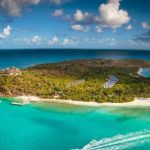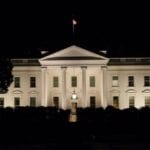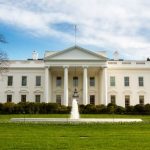 Weird Stuff
Weird Stuff  Weird Stuff
Weird Stuff  Our World
Our World 10 Archaeological Discoveries of 2025 That Refined History
 Weird Stuff
Weird Stuff 10 Fascinating Facts You Might Not Know About Snow
 Miscellaneous
Miscellaneous Top 10 Things Crypto Was Supposed to Change & What Actually Did
 History
History 10 Huge Historical Events That Happened on Christmas Eve
 Music
Music 10 Surprising Origin Stories of Your Favorite Holiday Songs
 History
History 10 Less Than Jolly Events That Occurred on December 25
 Weird Stuff
Weird Stuff 10 Funny Ways That Researchers Overthink Christmas
 Politics
Politics 10 Political Scandals That Sent Crowds Into the Streets
 Weird Stuff
Weird Stuff Ten Bizarre Facts About The Doge Meme
 Weird Stuff
Weird Stuff 10 Weird Things People Used to Do at New Year’s
 Our World
Our World 10 Archaeological Discoveries of 2025 That Refined History
 Weird Stuff
Weird Stuff 10 Fascinating Facts You Might Not Know About Snow
Who's Behind Listverse?

Jamie Frater
Head Editor
Jamie founded Listverse due to an insatiable desire to share fascinating, obscure, and bizarre facts. He has been a guest speaker on numerous national radio and television stations and is a five time published author.
More About Us Miscellaneous
Miscellaneous Top 10 Things Crypto Was Supposed to Change & What Actually Did
 History
History 10 Huge Historical Events That Happened on Christmas Eve
 Music
Music 10 Surprising Origin Stories of Your Favorite Holiday Songs
 History
History 10 Less Than Jolly Events That Occurred on December 25
 Weird Stuff
Weird Stuff 10 Funny Ways That Researchers Overthink Christmas
 Politics
Politics 10 Political Scandals That Sent Crowds Into the Streets
 Weird Stuff
Weird Stuff Ten Bizarre Facts About The Doge Meme
10 Lesser-Known “First and Only” Facts about U.S. Presidents
To date, 45 different men have served as president of the United States, each bringing their own unique qualities, leadership styles, and visions for the country. While some presidents have left behind a lasting impact—those who shone as trailblazers, achieving distinctive feats and goals during their time in office—unfortunately, the defining moments of other presidents have been overshadowed by scandals and impeachments.
Although history is full of well-documented achievements, both positive and negative, this list also focuses on the lesser-known presidential facts of those who made their mark on history in other ways. From the only president to attain the rank of Eagle Scout to the only president to be buried under a “foreign” flag to the only president whose first language wasn’t English, these presidents stand out and still remain not only the first but the only presidents to bear such distinct titles in the nation’s highest office.
Here are ten lesser-known “first and only” facts about United States presidents.
Related: 10 Politicians That Made All Their Money in Politics
10 Grover Cleveland
Although former President Grover Cleveland is more widely known as both the 22nd and 24th president—the only president to serve two non-consecutive terms—Cleveland also holds the title for two other presidential firsts during his time in office.
Born Steven Grover Cleveland on March 18, 1837, he was the fifth of nine children and, in time, would become known by his middle name rather than his birth name. Unfortunately, after his father died in 1853, 16-year-old Cleveland abandoned his plans of attending Hamilton College and instead went to work to support his mother and siblings.
Cleveland decided to travel west, and after clerking in a law firm in Buffalo, New York, he was later admitted to the bar in 1859, fulfilling his long-held goal of becoming a lawyer. From there, he became the district attorney for Erie County, New York, and served as the county sheriff. Despite having only modest success as a lawyer, at 44, Cleveland would emerge into a political prominence that would carry him all the way to the White House in just three short years.
Climbing the political ladder, Cleveland rose from mayor of Buffalo in 1882 to governor of New York in 1883 before finally becoming the 22nd president on March 4, 1885. This victory also made him the first Democrat elected after the Civil War.
Cleveland, however, entered the White House as a bachelor. It wasn’t until June 2, 1886, that 49-year-old Cleveland married 21-year-old Frances Clara Folsom. Folsom was not only 27 years his junior but also the daughter of Cleveland’s former law partner and his legal ward. (Cleveland became Folsom’s legal guardian when she was 11 years old after her father died.)
This union also made Cleveland the first and only president to marry in the White House. The Clevelands went on to have five children, and their second child, Esther, was also the first and only child of a president to be born in the White House.[1]
9 Franklin Pierce
Franklin Pierce was the 14th president of the United States and the son of Benjamin Pierce, a hero of the American Revolution who was among George Washington’s most trusted combat officers. Although the militia tradition ran through his veins, Pierce would serve only a short time in military service, and he would ultimately fall in love with law and politics.
Unfortunately, despite the many friends Pierce made during his time in Congress and the various positions he held in the state legislature, U.S. House of Representatives, and Senate, his career there was otherwise undistinguished. In 1842, Pierce resigned from the Senate for personal reasons, choosing to return to state politics and the law practice he had established in Concord, New Hampshire.
However, the Mexican-American War drew Pierce into active military service as a brigade commander in General Winfield Scott’s army from 1846 to 1848, proving he truly was his father’s son. Even in light of Pierce’s brief stint as an officer, he remained out of the public eye until the nominating convention of the Democratic party in 1852.
Then, a deadlock developed among supporters of leading presidential contenders—Lewis Cass, Stephen A. Douglas, and James Buchanan. Although Pierce was comparatively unknown, he was nominated on the 49th ballot. Pierce went on to win the general election by a landslide against his former commanding officer, the Whig Party’s Winfield Scott. This victory also meant that 47-year-old Pierce became the youngest man to be elected to the presidency at that time.
Unfortunately, Pierce’s triumph was quickly marred by tragedy when, shortly before his inauguration, Pierce and his wife, Jane, witnessed the death of their only surviving child—11-year-old Bennie—when their train was wrecked. Jane believed the accident was a punishment for Pierce’s seeking office. Sadly, this led Jane into a deep depression, and she did not attend Bennie’s funeral or her husband’s inauguration.
Despite his presidential inauguration being overshadowed by tragedy and a strained marriage, Pierce delivered his inaugural address as the first president to make extensive references to the United States flag and was the first president to deliver his speech from memory. Pierce also caused some surprise when he chose to “affirm” rather than “swear” his presidential oath, making him the first and only president to do so.[2]
8 Woodrow Wilson
Thomas Woodrow Wilson, nicknamed the “schoolmaster in politics,” was the 28th president of the United States, serving two terms from 1913 to 1921. While he is chiefly remembered for his high-minded idealism, America’s victory in World War I during his tenure, and signing women’s suffrage into law, Wilson is also set apart because he remains the only president to have earned a doctorate and still ranks as the recipient of the most honorary degrees—33 in total!
Despite being dyslexic from childhood, not learning to read until after he was 10, and never becoming a rapid reader, Wilson developed a passion for politics and literature. Wilson first went to Davidson College in North Carolina but withdrew after a year and later transferred to the College of New Jersey (which would later become Princeton University) in 1875.
During his time at Princeton, Wilson blossomed intellectually, reading widely, engaging in debate, and even editing the college newspaper. He also published a scholarly essay that compared the American government with the British parliamentary system before graduating with the class of 1879.
After graduating from Princeton, Wilson studied law for a year at the University of Virginia and was admitted to the Georgia bar in 1882. However, two years of a humdrum legal practice in Atlanta made Wilson realize that he hated practicing law, so he abandoned his legal career for graduate-level study in government and history at Johns Hopkins University in 1883.
There, Wilson wrote his first book, Congressional Government, published in 1885 and still admired today as a study of lawmaking in the U.S. government. The book was accepted as Wilson’s doctoral thesis, and he received his Ph.D. in the History of Government in 1886.
At the age of sixty-seven, Wilson died on February 3, 1924, and is the only president to be buried in the nation’s capital city of Washington, D.C.[3]
7 Martin Van Buren
The man who would become the eighth president of the United States stood just 5 feet, 6 inches (1.67 meters) tall and had an impeccable appearance. However, it would be Martin Van Buren’s cultural background and early childhood rather than his fastidious appearance that would not only catapult him into politics but also grant him distinct titles in his presidency.
Van Buren’s parents were of Dutch descent, and his father owned a successful inn and small farm in Kinderhook, New York. The Van Buren tavern served as a hub of social activity for the town. The constant coming and going of travelers between New York City and Albany brought young Van Buren into contact with all sorts of people, such as Alexander Hamilton and Aaron Burr, among other prominent lawyers and politicians that frequented his father’s establishment.
Being exposed to political communication and debate, Van Buren proved early on that he had a natural ability for organization and possessed the clarity needed to handle complicated issues. Therefore, in 1796, Van Buren became an apprentice for a lawyer named Francis Silvester, and at just 15 years old, Van Buren not only participated in his first court case but won! From there, he studied law and later opened a practice with his half-brother, James Van Alen, in 1803.
This, however, was just the beginning for Van Buren as his career in law and politics moved quickly. Van Buren went on to win a seat in the New York Assembly, became Attorney General, served in the U.S. Senate, and was governor of New York and vice president under Andrew Jackson before winning the presidential election of 1836.
Sadly, Van Buren’s wife, Hannah, died of tuberculosis 18 years before her husband reached the presidential position, and she would never have the opportunity to serve as first lady. Despite such a tragic loss, Van Buren’s election earned him two distinct honors—the first president born an American citizen and the only president for whom English was a second language (Van Buren’s first language was Dutch).[4]
6 William Taft
Even before William Howard Taft became the 27th president, he had a long, distinguished career in public service. By 29, Taft, the son of Alphonso Taft—secretary of war and former U.S. Attorney General under President Ulysses S. Grant—had graduated second in his class at Yale and served as a judge. By the age of 32, Taft became the youngest Solicitor General of the United States and, from there, served as a federal appeals judge for eight years.
However, Taft resigned his judgeship on March 15, 1900, after President William McKinley appointed him as chairman of the Second Philippine Commission. Taft displayed considerable talent in this role, and in 1901, he became the first civilian governor of the Philippines, where he worked to improve the island’s economy and infrastructure. Even with President Theodore Roosevelt offering Taft a chance to serve on the Supreme Court, Taft refused to leave the islands.
It wasn’t until 1904 that Taft agreed to return to Washington to serve as Roosevelt’s secretary of war, but only on the condition that he could continue supervising Philippine affairs. At the urging of Roosevelt, Taft ran for president and was elected in 1908, defeating William Jennings Bryan.
Taft served one term, and after losing the 1912 presidential election, he returned to the legal world, serving as a law professor at Yale.
On June 30, 1921, President Warren G. Harding fulfilled Taft’s lifelong dream by appointing him Chief Justice of the United States Supreme Court. Taft remains the only man in American history to have gained both the highest executive and judicial positions.[5]
5 Abraham Lincoln
When you think of Abraham Lincoln, the 16th President of the United States, a variety of things come to mind—his leadership during the tumultuous Civil War, the emancipation of enslaved people in the United States, and his untimely assassination by John Wilkes Booth. Despite all his achievements and the 32 memorials in America and around the world dedicated to such a legendary president, Lincoln also has the honor of being the only U.S. President to have had a patent.
Before Lincoln became president, he had a lifelong fascination with all things mechanical. In 1848, in between sessions of Congress, Lincoln began working on a device to lift boats over shoals. During Lincoln’s expeditions as a young man, ferrying people and produce on the Mississippi River and Great Lakes, he experienced misadventures where the boats ran aground on sandbars or got caught up on other obstacles, leading to the idea to equip boats with inflatable bellows along the hull.
Lincoln’s invention, “adjustable buoyant air chambers,” would be attached to the sides of a boat, which could then be lowered into the water and inflated to lift the boat over any obstructions. Lincoln filed a patent on March 10, 1849, and Patent No. 6,469 was granted to him on May 22, 1849, although his device was never manufactured.[6]
4 Gerald Ford
Gerald Ford’s path to the White House was anything but ordinary, from being born under a completely different name to giving up a professional football career to a term as vice president and president that resulted from scandals.
Born with the name Leslie Lynch King, Jr., his parents—Leslie Lynch King and Dorothy Ayer Gardner King—separated just two weeks after his birth. Dorothy then moved from Omaha, Nebraska, to Grand Rapids, Michigan, taking the infant with her to live at her parents’ residence. The Kings divorced later that year. The future president was renamed after his stepfather and became known to his friends as “Jerry.” However, it was not until December 3, 1935, that his name was legally changed to Gerald Rudolph Ford, Jr.
Ford went on to attend the University of Michigan at Ann Arbor from 1931 to 1935, and although he was an extremely gifted football player, Ford ultimately chose the legal profession over a professional football career. Ford majored in economics and political science and graduated with a B.A. in June 1935. From there, Ford attended Yale University, serving as an assistant football and boxing coach while earning his law degree before graduating in 1941.
In 1948, Ford won his first elective office as a Republican congressman from Michigan and served in Congress for 25 years.
However, when Richard Nixon’s vice president, Spiro T. Agnew, was forced to resign after pleading no contest to a tax evasion charge, President Nixon chose Ford to be the first vice president appointed to the office. Following one of the most thorough background investigations in the history of the FBI, Ford was sworn in as vice president on December 6, 1973.
Then, just nine months into Ford’s tenure as vice president, three articles of impeachment were passed by the House Judiciary Committee due to Nixon’s role in the Watergate scandal. Nixon resigned effective August 9, 1974, and the same day, Ford took the oath of office and became president, making him the nation’s only unelected president and vice president.
Ford also obtained another achievement—the only U.S. president to attain the rank of Eagle Scout, the highest rank in the Boy Scouts. When Ford died on December 26, 2006, his body was later taken to the Gerald R. Ford Museum for a public viewing on January 2, 2007. There, four hundred Eagle Scouts—aged 15 to 85—lined the road next to the museum and paid their respects to the former president.[7]
3 John Tyler
At 67, William Henry Harrison became the oldest man elected president at that time and the last president born under British rule. Unfortunately, despite the freezing weather, the ninth president of the United States wore no gloves, hat, or coat as he took the oath of office on March 4, 1841. After delivering a one-hour and 45-minute inaugural address (the longest inaugural address in history), Harrison developed a bad cold, which ultimately led to a fatal case of pneumonia.
Serving a mere 32 days in office, Harrison became the first to die in office and also has the unfortunate record of the shortest time in office of any president. Upon Harrison’s untimely death, Vice President John Tyler took the oath of office, making him the first Vice President to be elevated to the office of president due to the death of his predecessor.
However, John Tyler’s term as the tenth president from 1841 to 1845 was characterized by both achievements and controversy alike. While Tyler annexed Texas into the Union, expanding the United States territory, his tenure was also marred by political strife and opposition from his own party.
After leaving the White House, Tyler returned to his plantation in Virginia, later siding with the South when the Civil War began. Then, in November 1861, Tyler was elected to the Confederate House of Representatives but died on January 12, 1862, at 71, before his term began.
Due to his allegiance to the Confederate States of America, Tyler’s death was the only one in presidential history to not be officially recognized in Washington, D.C. Additionally, Lincoln did not issue the customary official proclamation to observe Tyler’s passing, and a Confederate flag was draped over his coffin, making him the only president to be buried under a “foreign” flag.[8]
2 Barack Obama
Taking the oath of office on the Bible that Abraham Lincoln used during his inauguration in 1861, Barack Obama drew 1.8 million people to the National Mall in Washington, D.C., to witness him become the first African American president on January 20, 2009. This marked a major milestone in U.S. history. However, in addition to this historic occasion, the 44th president also became the first commander-in-chief to be born outside the contiguous 48 states.
His parents—Barack Obama, Sr., and Stanley Ann Dunham—met in a Russian class in 1960 while both students at the University of Hawaii at Manoa. The couple was married on February 2, 1961, and Barack II was born six months later, on August 4, 1961, in Honolulu, Hawaii. However, Barack Sr. later left to pursue a doctorate degree and attend Harvard University, ultimately leading the couple to divorce in March 1964 when Obama was just 2 years old.
Obama’s mother went on to marry a man named Lolo Soetoro from Indonesia in 1965, and a year later, the family moved to Jakarta, where Obama spent his early childhood. Unfortunately, several events in Indonesia left Obama’s mother afraid for not only his safety but also his education, so in 1971, at the age of 10, he was sent back to Hawaii to live with his maternal grandparents.[9]
1 George W. Bush
George W. Bush, the 43rd president of the United States, served from 2001 to 2009. Born on July 6, 1946, in New Haven, Connecticut, he was the eldest son of George H.W. Bush, the 41st president, and Barbara Bush. Raised in Texas, Bush graduated from Yale University in 1968 and later earned an MBA from Harvard Business School in 1975, making him the first U.S. president with an MBA.
Before his presidency, Bush pursued a diverse career. He served as a pilot in the Texas Air National Guard during the Vietnam War era, worked in the oil industry, and co-owned the Texas Rangers baseball team. His political career began in earnest when he was elected governor of Texas in 1994, a position he held until 2000. As governor, he focused on education reform, tax cuts, and tort reform, gaining a reputation for bipartisan cooperation.
Bush’s presidency was marked by significant events and challenges, most notably the terrorist attacks on September 11, 2001. These attacks led to the War on Terror, which included the invasions of Afghanistan and Iraq. His administration’s domestic policies included the implementation of significant tax cuts, the No Child Left Behind Act aimed at education reform, and the controversial handling of Hurricane Katrina’s aftermath.
George W. Bush is not the first U.S. president to have a family member who also served as president. His father, George H.W. Bush, served from 1989 to 1993. Another example of a presidential family connection is John Quincy Adams, the 6th president, the son of John Adams, the 2nd president. In addition, Franklin D. Roosevelt (32nd president) and Theodore Roosevelt (26th president) were fifth cousins. However, their familial connection extended beyond blood relations through marriage; FDR married Eleanor Roosevelt, who was Theodore Roosevelt’s niece. This made Theodore Roosevelt not only a distant cousin but also an uncle by marriage to Franklin D. Roosevelt.
So, what does make George W. Bush a first (besides the MBA mentioned above)?
If you’ve ever watched the TODAY Show with Hoda & Jenna, you’re probably familiar with co-host Jenna Bush Hager. Hager and her fraternal sister, Barbara Pierce Bush, are the daughters of former U.S. President George W. Bush and First Lady Laura Bush, making them unique among the First Children. George W. Bush is the only president to have fathered twins.[10]








